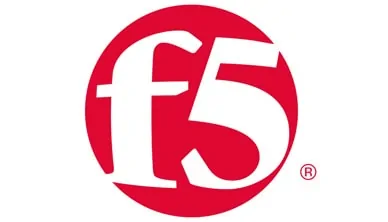
Lesson 1: Setting Up the BIG-IP System
- Introducing the BIG-IP System
- Initially Setting Up the BIG-IP System
- Archiving the BIG-IP System Configuration
- Leveraging F5 Support Resources and Tools
Lesson 2: Traffic Processing with BIG-IP
- Identifying BIG-IP Traffic Processing Objects
- Overview of Network Packet Flow
- Understanding Profiles
- Overview of Local Traffic Policies
- Visualizing the HTTP Request Flow
Lesson 3: Web Application Concepts
- Overview of Web Application Request Processing
- Web Application Firewall: Layer 7 Protection
- F5 Advanced WAF Layer 7 Security Checks
- Overview of Web Communication Elements
- Overview of the HTTP Request Structure
- Examining HTTP Responses
- How F5 Advanced WAF Parses File Types, URLs, and Parameters
- Using the Fiddler HTTP Proxy
Lesson 4: Common Web Application Vulnerabilities
- A Taxonomy of Attacks: The Threat Landscape
- What Elements of Application Delivery are Targeted?
- Common Exploits Against Web Applications
Lesson 5: Security Policy Deployment
- Defining Learning
- Comparing Positive and Negative Security Models
- The Deployment Workflow
- Policy Type: How Will the Policy Be Applied
- Policy Template: Determines the Level of Protection
- Policy Templates: Automatic or Manual Policy Building
- Assigning Policy to Virtual Server
- Deployment Workflow: Using Advanced Settings
- Selecting the Enforcement Mode
- The Importance of Application Language
- Configure Server Technologies
- Verify Attack Signature Staging
- Viewing Requests
- Security Checks Offered by Rapid Deployment
- Defining Attack Signatures
- Using Data Guard to Check Responses
Lesson 6: Policy Tuning and Violations
- Post-Deployment Traffic Processing
- Defining Violations
- Defining False Positives
- How Violations are Categorized
- Violation Rating: A Threat Scale
- Defining Staging and Enforcement
- Defining Enforcement Mode
- Defining the Enforcement Readiness Period
- Reviewing the Definition of Learning
- Defining Learning Suggestions
- Choosing Automatic or Manual Learning
- Defining the Learn, Alarm and Block Settings
- Interpreting the Enforcement Readiness Summary
- Configuring the Blocking Response Page
Lesson 7: Attack Signatures & Threat Campaigns
- Defining Attack Signatures
- Attack Signature Basics
- Creating User-Defined Attack Signatures
- Defining Simple and Advanced Edit Modes
- Defining Attack Signature Sets
- Defining Attack Signature Pools
- Understanding Attack Signatures and Staging
- Updating Attack Signatures
- Defining Threat Campaigns
- Deploying Threat Campaigns
Lesson 8: Positive Security Policy Building
- Defining and Learning Security Policy Components
- Defining the Wildcard
- Defining the Entity Lifecycle
- Choosing the Learning Scheme
- How to Learn: Never (Wildcard Only)
- How to Learn: Always
- How to Learn: Selective
- Reviewing the Enforcement Readiness Period: Entities
- Viewing Learning Suggestions and Staging Status
- Violations Without Learning Suggestions
- Defining the Learning Score
- Defining Trusted and Untrusted IP Addresses
- How to Learn: Compact
Lesson 9: Cookies and Other Headers
- F5 Advanced WAF Cookies: What to Enforce
- Defining Allowed and Enforced Cookies
- Configuring Security Processing on HTTP headers
Lesson 10: Reporting and Logging
- Overview: Big Picture Data
- Reporting: Build Your Own View
- Reporting: Chart based on filters
- Brute Force and Web Scraping Statistics
- Viewing F5 Advanced WAF Resource Reports
- PCI Compliance: PCI-DSS 3.0
- The Attack Expert System
- Viewing Traffic Learning Graphs
- Local Logging Facilities and Destinations
- How to Enable Local Logging of Security Events
- Viewing Logs in the Configuration Utility
- Exporting Requests
- Logging Profiles: Build What You Need
- Configuring Response Logging
Lesson 11: Lab Project 1
Lesson 12: Advanced Parameter Handling
- Defining Parameter Types
- Defining Static Parameters
- Defining Dynamic Parameters
- Defining Dynamic Parameter Extraction Properties
- Defining Parameter Levels
- Other Parameter Considerations
Lesson 13: Automatic Policy Building
- Overview of Automatic Policy Building
- Defining Templates Which Automate Learning
- Defining Policy Loosening
- Defining Policy Tightening
- Defining Learning Speed: Traffic Sampling
- Defining Track Site Changes
Lesson 14: Web Application Vulnerability Scanner Integration
- Integrating Scanner Output
- Importing Vulnerabilities
- Resolving Vulnerabilities
- Using the Generic XML Scanner XSD file
Lesson 15: Deploying Layered Policies
- Defining a Parent Policy
- Defining Inheritance
- Parent Policy Deployment Use Cases
Lesson 16: Login Enforcement and Brute Force Mitigation
- Defining Login Pages for Flow Control
- Configuring Automatic Detection of Login Pages
- Defining Session Tracking
- Brute Force Protection Configuration
- Source-Based Brute Force Mitigations
- Defining Credentials Stuffing
- Mitigating Credentials Stuffing
Lesson 17: Reconnaissance with Session Tracking
- Defining Session Tracking
- Configuring Actions Upon Violation Detection
Lesson 18: Layer 7 DoS Mitigation
- Defining Denial of Service Attacks
- Defining the DoS Protection Profile
- Overview of TPS-based DoS Protection
- Creating a DoS Logging Profile
- Applying TPS Mitigations
- Defining Behavioral and Stress-Based Detection
Lesson 19: Advanced Bot Protection
- Classifying Clients with the Bot Defense Profile
- Defining Bot Signatures
- Defining Proactive Bot Defense
- Defining Behavioral and Stress-Based Detection
- Defining Behavioral DoS Mitigation
Lesson 20: Form Encryption using DataSafe
- Targeting Elements of Application Delivery
- Exploiting the Document Object Model
- Protecting Applications Using DataSafe
- The Order of Operations for URL Classification
Lesson 21: Review and Final Labs
This course is intended for security and network administrators who will be responsible for the installation, deployment, tuning, and day-to-day maintenance of the F5 Advanced Web Application Firewall.
Administering BIG-IP; basic familiarity with HTTP, HTML and XML; basic web application and security concepts.
 Print Page
Print Page